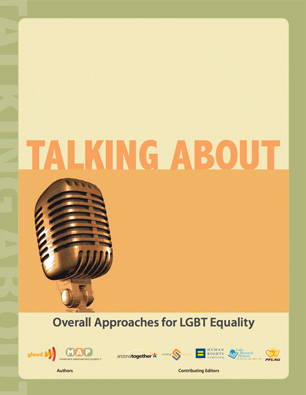The Bottom Line
The best and most effective discussions about lesbian, gay, bisexual and transgender (LGBT) issues help people understand what those issues are about in authentic and emotionally compelling ways that resonate with their values.
Talking About LGBT Equality: Overall Approaches is the foundation of the Talking About LGBT Issues series, providing an overview of approaches that community members and allies can use to improve conversations about LGBT equality, with a focus on emphasizing common ground, illustrating the concrete harms that LGBT people face, helping straight people see those harms through their own eyes, and avoiding missteps that can create roadblocks to successful discussions.
Talking About LGBT Equality: Overall Approaches Download


